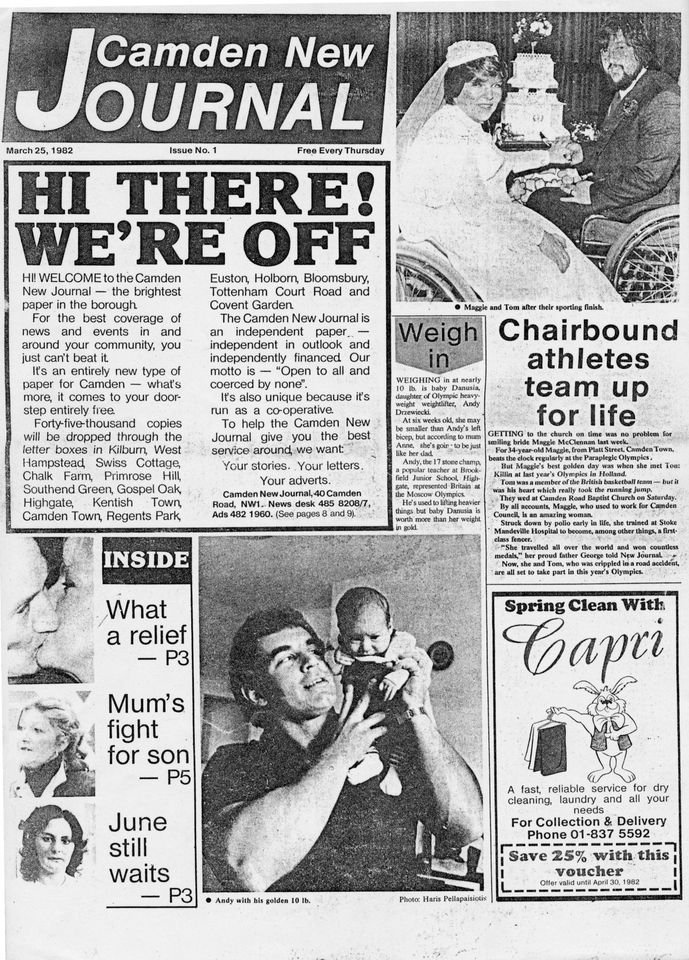CNJ 2000: Strike! How the New Journal began
As the CNJ hits 2,000 issues, Howard Hannah looks back on how it all began
Thursday, 12th November 2020 — By Howard Hannah

By the winter of 1980, it had already started: a steady stream of closures of local and regional newspapers which had for decades – in some cases centuries – kept the UK’s population informed about what was going on in their patch of the country.
But in the turbulent years of the 1970s, with the quest for higher profits driving a rapid monopolisation of press ownership, more and more people lost the newspapers dedicated to their towns and cities.
So when on December 19 1980 nine journalists on the Camden Journal were unceremoniously told that their paper was closing down and their jobs had gone, the alarm bells sounded far beyond this north London borough.
The nine journalists were part of a larger union shop (chapel) which included staff on the Hornsey Journal and the Islington Gazette – around 18 members who resolved to challenge to closure.
But what really hardened their resolve in those few days before Christmas was an immediate and extraordinary groundswell of support in the Camden community.
The Camden Journal had covered news without fear or favour involving sports clubs, local tenants’ organisations, social clubs, businesses, trade unions, community health councils, Camden Council – all local human life was there and all of it rallied to the cause.

It wasn’t simply party political support – Labour, Conservative and Liberals joined in demands for our management to think again.
The strength of this reaction served to encourage local journalists throughout London to take strike action. They feared their jobs and their titles were also at risk.
As did hundreds of others employed by the same owners, Courier Press Holdings based in Leamington Spa.
The strike was a long one. Hundreds of union members in London, the Midlands and west Wales took strike action. Colleagues were arrested at demonstrations and on picket lines.
Two large marches were held through the streets of the borough attracting thousands of supporters.
And support from the community and the National Union of Journalists (NUJ) enabled us the publish our own paper, Save the Camden Journal.
Our aim throughout was to stem the tide of closing newspaper titles and loss of journalists’ jobs. We had an ethical agenda and had run – at the time controversial – campaigns exposing racism and social injustice.
Sadly, after 15 months we had to accept a settlement which fell short of our aims.
But one condition was an agreement to sell the Camden Journal title for £1. And that was the birth of the Camden New Journal.
Two members of the old Journal – Eric Gordon, its editor, and reporter Angela Cobbinah – took up the challenge.
And so on March 25 1982 the CNJ’s issue No 1 hit the streets, joyfully delivered by supporters who had stuck by the Save the Journal campaign. We may have failed to stop the continuing nationwide loss of local newspapers.

Eric Gordon, the founding editor
But the CNJ at least has added two – our Islington Tribune and Westminster Extra have been launched in neighbouring boroughs. Forty years on, as CNJ issue No 2,000 hits the streets, the question of how to finance the dissemination of local news – so essential as the glue of our communities and our democracy – is as problematic as ever.
But the CNJ and its sister papers remain a beacon of hope.
Howard Hannah was Father of Camden/Hornsey Journals NUJ Chapel,1976-1982; and is Books & Arts editor of the New Journal